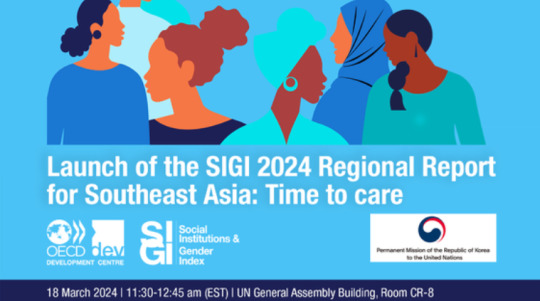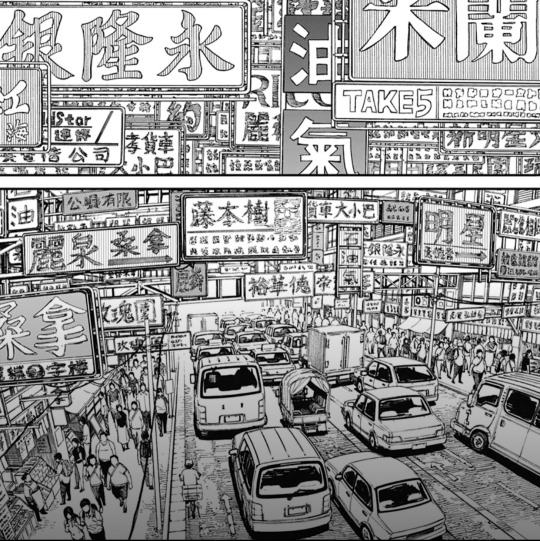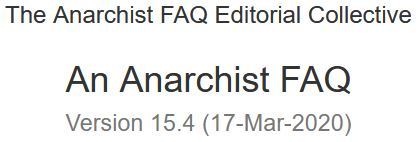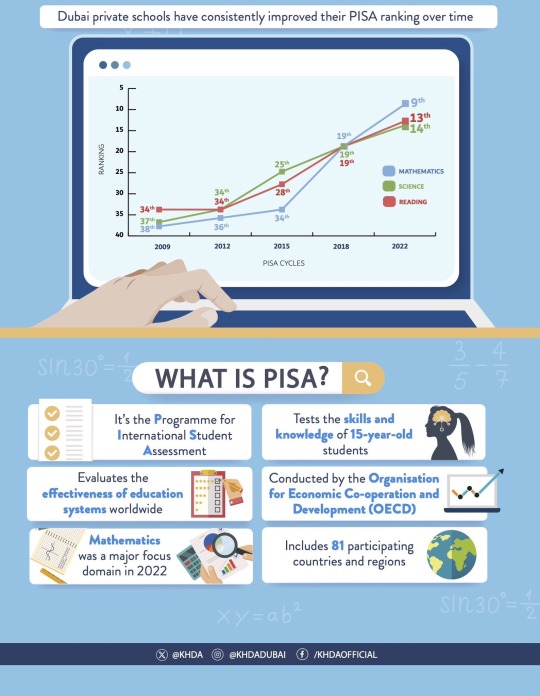#OECD Education
Text
Declining Math Skills in Canadian Students: A PISA Study
The most recent Programme for International Student Assessment (PISA) results have shown a significant decline in Canadian children’s math abilities. This decline, measured from 2003 to 2022, shows only 12% of Canadian students reaching high proficiency levels in math, a stark contrast to higher percentages in Asian regions like Singapore and Hong Kong.
The PISA Examination
Administered…

View On WordPress
#Academic Performance#Canada Math Education#Educational Standards#Global Ranking#Math Proficiency#OECD Education#PISA 2022#Student Assessment#Teaching Methods
0 notes
Photo


this chart is just fascinating to me. even though northern ireland has a statistically lower mean literacy score than the usa, they still have fewer people at scoring level 1 or below in the test. which means that the usa’s higher average is because of the extra 3% scoring at levels 4 and 5
i don’t know if this can inherently be linked to wealth inequality in the usa (great education for people who can afford it, less so for those who can’t), but the disparities between england and northern ireland certainly feel quite stark.
after all, despite receiving funding from the same central government (ni has stormont in addition to westminster, whereas england just has westminster), england has 3.4% more adults scoring high on the literacy test.
all that being said, northern irish people are still better at americans at maths (despite again having fewer people score the highest levels on the test), so at least there’s that
#uk#england#northern ireland#usa#i'd say i'm surprised to see that the usa is significantly worse than the rest of the oecd at maths#but given how weirdly their maths education is divided up it doesn't really shock me
1 note
·
View note
Text
Balancing AI Regulation in Education with Innovation: 6 Insights from Comparative Research
Curious about how AI is shaping the future of education? Our latest report dives into real-world insights from educators and AI experts. Discover the challenges, opportunities, and ethical considerations in AI integration.
As artificial intelligence (AI) becomes increasingly integral to educational practices, the debate over how to govern this powerful technology grows more pressing. The Organisation for Economic Co-operation and Development (OECD) recently published a working paper titled Artificial Intelligence and the Future of Work, Education, and Training, which delves into the potential impact of AI on equity…
#AI governance#AI in classrooms#AI in education#AI policy#AI regulation#algorithmic bias#data privacy#Ethical AI#Graeme Smith#Innovation in Education#OECD AI report#thisisgraeme
0 notes
Text
Launch of the SIGI 2024 SIGI Regional Report for Southeast Asia: Time to care (CSW68 Side Event).
Watch the Launch of the SIGI 2024 SIGI Regional Report for Southeast Asia: Time to care (CSW68 Side Event)!
Care systems in Southeast Asia rely heavily on women's unpaid work. But demographic, educational, and economic shifts are increasing the demand for paid care. What does this mean for women in the region - and what challenges lie ahead? This event will explore the care economy's transformative power to accelerate women's economic empowerment, while strengthening Southeast Asia's resilience to external shocks.
Hosted by Korea, the OECD Development Centre is organising a CSW68 Side-event to launch the SIGI 2024 SIGI Regional Report for Southeast Asia: "Time to Care". The side-event aims to delve into the root causes of gender inequality in Southeast Asia and explore potential solutions, particularly in formalising the care sector.
The SIGI 2024 SIGI Regional Report for Southeast Asia: Time to Care underscores that discrimination remains most pronounced within the family. Traditional gender roles continue to confine women to caregiving responsibilities, while men are expected to assume the roles of family providers and decision-makers.
Hosted by Korea, the OECD Development Centre is organising a CSW68 Side-event to launch the SIGI 2024 SIGI Regional Report for Southeast Asia: "Time to Care". The side-event aims to delve into the root causes of gender inequality in Southeast Asia and explore potential solutions, particularly in formalising the care sector.
The SIGI 2024 SIGI Regional Report for Southeast Asia: Time to Care underscores that discrimination remains most pronounced within the family. Traditional gender roles continue to confine women to caregiving responsibilities, while men are expected to assume the roles of family providers and decision-makers.
The event will feature a panel discussion where speakers will share insights on how gender-transformative policies and innovative programmes in the care sector can challenge established gender norms, promote women's rights, foster gender equality, and drive sustainable development. The event will also explore pathways for collective action, involving policy makers, lawmakers, grassroots organisations, philanthropy, and the wider development community. Together, these stakeholders can accelerate progress toward realising Sustainable Development Goal 5 and the 2030 Agenda for Sustainable Development in the Southeast Asian region.
Related Sites and Documents
Concept note and programme
Flyer

#OECD Development#Social Institutions and Gender Index#Southeast Asia#demographic shifs#educational shifs#economic shifts#side-events#women's economic empowerment#resilience to external shocks#care economy#women's unpaid work#Sustainable Development Goal 5#sdg5#agenda 2030#Time to Care#gender inequality#csw68#women's rights#caregiving responsibilities#family providers#decision-makers
0 notes
Text
What is PISA Ranking?
The field of education, like many other sectors, has its unique metrics and ranking systems. One such influential ranking system is the PISA ranking. But, what exactly is PISA ranking, and why is it important? This article aims to demystify the PISA ranking, discussing its inception, methodology, and its role in shaping global education policies.
Decoding PISA
The Programme for International…

View On WordPress
#education policies#education system#global education#learning outcomes#OECD#PISA assessment.#PISA methodology#PISA Ranking
0 notes
Text
Regards sur l’éducation 2022 (OCDE)
"Regards sur l’éducation est le rapport de référence sur l’état de l’éducation dans le monde. Ce rapport décrit la structure, le financement et la performance des systèmes d’éducation des pays membres et partenaires de l’OCDE. Avec plus d’une centaine de tableaux et graphiques – et d’innombrables données supplémentaires en ligne – Regards sur l’éducation foisonne d’informations sur les résultats des établissements ; l’impact de l’apprentissage ; l’accès à l’éducation, les taux de scolarisation et les parcours scolaires ; les investissements dans l’éducation ; et les enseignants, l’environnement d’apprentissage et l’organisation de l’enseignement. L’édition de 2022 porte plus particulièrement sur l’enseignement tertiaire et analyse l’augmentation de l’effectif diplômé de ce niveau et les retombées personnelles et collectives qui y sont associées. Sont également étudiés les coûts de l’enseignement tertiaire et la répartition du budget entre les niveaux de l’exécutif et entre les pouvoirs publics et les étudiants. Un chapitre spécifique est consacré à la crise du COVID et à la transition entre gestion de crise et relance. Deux nouveaux indicateurs sur le développement professionnel des enseignants et des chefs d’établissement et sur le profil du corps professoral complètent l’édition de cette année." - source
La version française du rapport sera disponible le 28 octobre 2022
> Lire et télécharger le rapport (anglais)
> Lire et télécharger le rapport (français)
0 notes
Text
Transfer Pricing Country Profiles - OECD
Transfer Pricing Country Profiles – OECD
COUNTRY PROFILES
Last updated: 25 October 2022
These country profiles focus on countries’ domestic legislation regarding key transfer pricing principles, including the arm’s length principle, transfer pricing methods, comparability analysis, intangible property, intra-group services, cost contribution agreements, transfer pricing documentation, administrative approaches to avoiding and…

View On WordPress
#Agriculture#bribery#chemical safety#competition#corporate governance#corruption#country profile#Development#economy#education#employment#Environment#finance#green growth#health#htvi#industry#legislation#migration#OECD#pensions#practice#pricing#social#tax#transfer#transfer pricing
0 notes
Text
Good News - August 8-14
Like these weekly* compilations? Tip me at $kaybarr1735 or check out my new(ly repurposed) Patreon! (*sorry this one’s a day late, I had a family emergency)
1. Rio’s grassroots agroforestry sustains birds, bees & communities

“[Community-created and -maintained] agroforests have reshaped the urban landscape and now attract an array of fauna, from birds to bees and even fireflies, drawn by the diversity of plant life thriving on improved soils. Perhaps most importantly, the agroforests offer free food and medicines to residents in need, plus shade and educational opportunities for the whole community[….]”
2. First giant pandas from China in decades make their public debut in San Diego

(image source) “Tensions between the U.S. and China had temporarily paused the program known as "panda diplomacy" in which China loans its native animals to zoos around the world […] as a show of goodwill[….] But the presence of [the two pandas in San Diego] appears to show a mending of the diplomatic relationship, which Chinese President Xi Jinping pledged to work toward in a meeting with President Biden last year. [… Gov. Newsom] called the giant pandas an example of how strong worldly partnerships can protect wildlife and their habitats[….]”
3. Good news for Europe's top economies as disposable income rises

“Poland experienced the largest increase in disposable income per capita, rising by 10.2% compared with a decrease of 2.7% in the last quarter of 2023. According to the OECD, this growth was "mainly driven by increases in employee compensation, social benefits other than in-kind transfers, and property income". […] In Germany, [household income per capita] rose by 1.4%, compared to just 0.1% in the previous quarter, partly driven by an increase in employee compensation.”
4. FDA approves nasal spray as first needle-free treatment for anaphylaxis
“The spray, which will be sold under the brand name Neffy, is seen as an alternative to EpiPen and other autoinjectors. […] “Some people, particularly children, may delay or avoid treatment due to fear of injections,” said Kelly Stone, an associate director at the FDA’s Center for Drug Evaluation and Research, adding that the availability of the nasal spray may reduce barriers to rapid treatment.”
5. [Colin Farrell] is launching a foundation to support adult[s] who have an intellectual disability

““We want to take a good look at residential potential for families with young adults who are ready to go out into the world and have a greater sense of community and connection,” says the actor. […] "It’s really important for James and for all of our kids to feel like they are wanted, to feel like they’re part of the community. Not just out of charitable endeavors or being nice and doing the right thing, but out of a sincere desire to engage and learn about each other."”
6. The Berlin Zoo is hoping for more German-born giant pandas as scans confirm a pregnancy

“Giant pandas have difficulty breeding and births are particularly welcomed. There are about 1,800 pandas living in the wild in China and a few hundred in captivity worldwide. […] The zoo noted that female pandas are only capable of reproducing for about 72 hours per year.”
7. Arizona school district highlights the benefits of free lunch
“A study by the University of Washington found free meals at school help reduce hunger, reduce the stigma tied to free lunch, and can help reduce childhood obesity. [… A cafeteria worker] said since the school district began offering free lunch, they have seen a positive shift in the cafeteria culture, and students seem happier. […] In September of 2023, the USDA […] loosened up its application threshold for applicants, allowing an estimated 3,000 more school districts in high-need areas to participate in the [CEP] program.”
8. Gigantic millipede lost to science for 126 years rediscovered in remote Madagascan jungle

“A further 20 species 'lost' to science were rediscovered during the expedition, including three iridescent species of fish and several species of ant-like flower beetles.”
9. The climate law’s $8.8B in home energy rebates are starting to roll out

“New York and Wisconsin are the first to launch their long-awaited Inflation Reduction Act programs meant to deploy everything from heat pumps to insulation. […] Once deployed, the DOE estimates, the home energy rebates will help save consumers up to $1 billion in annual energy costs and support an estimated 50,000 U.S. jobs in construction, manufacturing, and other sectors. They’ll also help clean up buildings, one of the biggest sources of carbon pollution in the country.”
10. Advance in stem cell therapy: New technique for manipulating stem cells opens door to novel treatments

“Recently, a team of McGill researchers discovered that by stretching, bending and flattening the nuclei of stem cells to differing degrees, they could generate precisely targeted cells that they could direct to become either bone or fat cells. […] The first applications of this discovery are likely to involve bone regeneration, possibly relating to dental or cranio-facial repair[….]”
August 1-7 news here | (all credit for images and written material can be found at the source linked; I don’t claim credit for anything but curating.)
#hopepunk#good news#community#agroforestry#community garden#panda#china#giant panda#disposable income#economy#living wage#fda#epipen#allergies#medicine#actor#intellectual disability#disability#germany#free lunch#free food#school#insect#bug#tw insects#tw bugs#millipede#climate change#science#stem cell therapy
31 notes
·
View notes
Note
I've read through your posts and deliberated some more, yet I still don't see the connection of a critique on capitalism. I see the critique of work, yes, but mostly because it reflects Denji's self value. I don't think it's the same.
Let's dive into capitalism...

You're not the first to ask, so I'll answer (I'll try to be succinct).
I just want to make it clear that this is all my interpretation, if you still don't see a connection after this post. Then you're just interpreting this point differently, and that's completely ok.
For more context I think it's interesting to point out who I am or rather what I do. I'm a lawyer, still in training but enough to call myself one. I specialize in a rather specific area of law in France: public economic law. Let's put it this way: it's a body of law that analyzes the relationship between the State and individuals, and focuses solely on the general interest.
Let's agree on a definition of capitalism. Capitalism is an economic and social system in which capital (the source of income) and the means of production and exchange do not belong to those who use them through their own labor.
It's important to note that capitalism takes different forms in each state.



In Japan, the origins of capitalism lie in vigorous state intervention. The period that best characterizes it is the Meiji era, the 19th century. Today, this is revealed by the significant intervention of the Ministry of the Economy.
If all this sounds complicated, there is a first element of definition. If I don't just see a critique of the world of work in the public hunter system, it's also because one of Chainsaw Man's themes is the state. I'm not extrapolating, since it's a theme that recurs several times, whether through Makima and her confrontation with the gun demon, or through the choice of security structure: public. That is, controlled by the Japanese government.


I think that, yes, CSM makes a more global criticism than a specific point of society, and speaks of the relationship between citizen and state.
But let's continue. It's not insignificant either that the first images of the CSM season 1 trailer are of a dark alleyway overflowing with rats. Nor is it insignificant to set up a character, very young, and very poor as a main character. This doesn't shock us, as heroes tend to have tragic pasts, but it's not an empty choice.

When we think of neoliberalism, the example of the United States or the United Kingdom are the first that come to mind. Yet Japan is the OECD country that has seen the greatest rise in inequality, due to deregulation of the labor market and the rise in precarious employment (40% of the working population today) with the privatization of key sectors such as rail and postal services.
Privatization movements ? That's been covered.

But another feature of Japan's aggressive neoliberalism is the university. Whose entrance fees are increasing atrociously.
University entrance fees ? Lack of education for the most precarious classes ? That's been covered.

What I'm trying to prove once again is that Fujimoto applies himself to revealing the relationship between individuals and states. Makima, the antagonist, is even subjected to it, inscribed in a hierarchical relationship. She has also become an uncontrollable demon to the point of making the United States swoon, for she is nothing more than a chimera created by the Japanese government, which has hammered her with the doctrine of evil necessary for the greater common good. In other words, collectivism.


The connection between capitalism and Denji's character is often made, but even Makima, the antagonist, was following a goal imposed by a larger structure, from which she didn't really benefit because she wasn't happy.
Nor is Chainsaw Man just about an extremely harsh working world. We're also talking about the extent to which Denji is satisfied with little things (which Fujimoto also sees in a positive light).
But Fujimoto's main point with Denji is not that the problem lies in his dreaming of toast per se (although that's a problem too), but that there's a disproportion between his sacrifices and his rewards.
It's not insignificant that Denji suffers horribly when he turns into Chainsaw Man, that the system seems to work with him because he sees himself only as a tool.
Capitalism is defined above all by the fact that the worker does not reap all the benefits of his work.
Denji literally produces the added value that will serve his structure without perceiving the benefits in the extreme. Since Makima is going to take all the benefits away from him.

Is it fair, then, to speak of a simple critique of labor when we know that the antagonist is the product of the Japanese government? Don't think of the critique of the world of work as a separate, singular critique, but as part of a critique of a more global system: Japan and its current regime, capitalism.
For it is the relationship between the economy and the state's conception of it that affects the world of work. The liberalization movement that began in the 1980s and accelerated in the 2000s and 2010s is a striking example of this. What is the clearest result of the relationship between globalization and Japan than manga ?

If there's one thing that helped me understand Fujimoto's interest in these issues, it's his relationship with his own industry. His works culminate in themes relating to the community and the individual, and their relationship with art and culture. Just think of all those movie scenes.



Fujimoto isn't delivering a critique of capitalism because it's fashionable to do so, he's following a lineage of his own.

Fujimoto isn't delivering a critique of capitalism because it's fashionable, he's following a lineage, also talking about the relationship between capitalism and his art. The mangakas themselves are trapped in a logic of commercialization and commodity production, to the detriment of creativity itself. I feel that Part 2 is a complete response to Chainsaw Man's worldwide success. The way Denji's daily life hasn't changed a bit, and also the parallel with Fujimoto.

An ultra-popular author... but one who turns in a chapter once a week.

#my thoughts#analysis#csm#chainsaw man#chainsaw man spoilers#ask#fujimoto#csm part 1#csm part 2#fujimoto tatsuki#thank for the ask!!
148 notes
·
View notes
Photo

The Brain Drain Phenomenon: % of country’s college-educated nationals in (other) OECD country
126 notes
·
View notes
Text
The Nordic model has been characterized as follows:[16]
An elaborate social safety net, in addition to public services such as free education and universal healthcare[16] in a largely tax-funded system.[17]
Strong property rights, contract enforcement and overall ease of doing business.[18]
Public pension plans.[16]
High levels of democracy as seen in the Freedom in the World survey and Democracy Index.[19][20]
Free trade combined with collective risk sharing (welfare social programmes and labour market institutions) which has provided a form of protection against the risks associated with economic openness.[16]
Little product market regulation. Nordic countries rank very high in product market freedom according to OECD rankings.[16]
Low levels of corruption.[19][16] In Transparency International's 2019 Corruption Perceptions Index, Denmark, Finland, Norway and Sweden were ranked among the top 10 least corrupt of the 179 countries evaluated.[21]
A partnership between employers, trade unions and the government, whereby these social partners negotiate the terms to regulating the workplace amongst themselves, rather than the terms being imposed by law.[22][23] Sweden has decentralised wage co-ordination while Finland is ranked the least flexible.[16] The changing economic conditions have given rise to fear among workers as well as resistance by trade unions in regards to reforms.[16]
High trade union density and collective bargaining coverage.[24] In 2019, trade union density was 90.7% in Iceland, 67.0% in Denmark, 65.2% in Sweden, 58.8% in Finland, and 50.4% in Norway; in comparison, trade union density was 16.3% in Germany and 9.9% in the United States.[25] Additionally, in 2018, collective bargaining coverage was 90% in Iceland, 88.8% in Finland (2017), 88% in Sweden, 82% in Denmark, and 69% in Norway; in comparison collective bargaining coverage was 54% in Germany and 11.7% in the United States.[26] The lower union density in Norway is mainly explained by the absence of a Ghent system since 1938. In contrast, Denmark, Finland and Sweden all have union-run unemployment funds.[27]
The Nordic countries received the highest ranking for protecting workers rights on the International Trade Union Confederation 2014 Global Rights Index, with Denmark being the only nation to receive a perfect score.[28]
Sweden at 56.6% of GDP, Denmark at 51.7%, and Finland at 48.6% reflect very high public spending.[29] Public expenditure for health and education is significantly higher in Denmark, Norway, and Sweden in comparison to the OECD average.[30]
Overall tax burdens as a percentage of GDP are high, with Denmark at 45.9% and both Finland and Sweden at 44.1%.[31] The Nordic countries have relatively flat tax rates, meaning that even those with medium and low incomes are taxed at relatively high levels.[32][33]
The United Nations World Happiness Reports show that the happiest nations are concentrated in Northern Europe. The Nordics ranked highest on the metrics of real GDP per capita, healthy life expectancy, having someone to count on, perceived freedom to make life choices, generosity and freedom from corruption.[34] The Nordic countries place in the top 10 of the World Happiness Report 2018, with Finland and Norway taking the top spots.[35]
x
I think a lot of people are missing that the Nordic model is:
generally very friendly to businesses
composed of largely organically set standards (workers rights secured by collective bargaining and trade-unions, not by a centralized authority) (as opposed to a centralized bureaucracy)
Largely structured to provide citizens with benefits that make workforce participation easier. The ordering of the social safety net and welfare state make it relatively easy to upskill and hold a job.
34 notes
·
View notes
Text
Brazil’s compulsory schooling surpasses OECD average

Brazil’s compulsory schooling exceeds the average in countries in the Organization for Economic Cooperation and Development (OECD), but it still needs to reach out-of-school children and adolescents. Early childhood education, a key focus of the international report Education at a Glance (EaG) 2024, released on September 10, highlights this issue.
According to the report, Brazil mandates school enrollment for all children and adolescents aged 4 to 17. With 13 years of compulsory education, Brazil’s requirement exceeds the OECD average of 11 years. However, in early childhood education, Brazil enrolls 90 percent of five-year-olds in preschool, falling short of the OECD average of 96 percent.
Early childhood education is a key focus in Brazil, particularly during the municipal election year, as it falls under the purview of municipal authorities to ensure both enrollment and quality at this educational level.
Continue reading.
8 notes
·
View notes
Text

B.2.2 Does the state have subsidiary functions?
Yes, it does. While, as discussed in the last section, the state is an instrument to maintain class rule this does not mean that it is limited to just defending the social relationships in a society and the economic and political sources of those relationships. No state has ever left its activities at that bare minimum. As well as defending the rich, their property and the specific forms of property rights they favoured, the state has numerous other subsidiary functions.
What these are has varied considerably over time and space and, consequently, it would be impossible to list them all. However, why it does is more straight forward. We can generalise two main forms of subsidiary functions of the state. The first one is to boost the interests of the ruling elite either nationally or internationally beyond just defending their property. The second is to protect society against the negative effects of the capitalist market. We will discuss each in turn and, for simplicity and relevance, we will concentrate on capitalism (see also section D.1).
The first main subsidiary function of the state is when it intervenes in society to help the capitalist class in some way. This can take obvious forms of intervention, such as subsidies, tax breaks, non-bid government contracts, protective tariffs to old, inefficient, industries, giving actual monopolies to certain firms or individuals, bailouts of corporations judged by state bureaucrats as too important to let fail, and so on. However, the state intervenes far more than that and in more subtle ways. Usually it does so to solve problems that arise in the course of capitalist development and which cannot, in general, be left to the market (at least initially). These are designed to benefit the capitalist class as a whole rather than just specific individuals, companies or sectors.
These interventions have taken different forms in different times and include state funding for industry (e.g. military spending); the creation of social infrastructure too expensive for private capital to provide (railways, motorways); the funding of research that companies cannot afford to undertake; protective tariffs to protect developing industries from more efficient international competition (the key to successful industrialisation as it allows capitalists to rip-off consumers, making them rich and increasing funds available for investment); giving capitalists preferential access to land and other natural resources; providing education to the general public that ensures they have the skills and attitude required by capitalists and the state (it is no accident that a key thing learned in school is how to survive boredom, being in a hierarchy and to do what it orders); imperialist ventures to create colonies or client states (or protect citizen’s capital invested abroad) in order to create markets or get access to raw materials and cheap labour; government spending to stimulate consumer demand in the face of recession and stagnation; maintaining a “natural” level of unemployment that can be used to discipline the working class, so ensuring they produce more, for less; manipulating the interest rate in order to try and reduce the effects of the business cycle and undermine workers’ gains in the class struggle.
These actions, and others like it, ensures that a key role of the state within capitalism “is essentially to socialise risk and cost, and to privatise power and profit.” Unsurprisingly, “with all the talk about minimising the state, in the OECD countries the state continues to grow relative to GNP.” [Noam Chomsky, Rogue States, p. 189] Hence David Deleon:
“Above all, the state remains an institution for the continuance of dominant socioeconomic relations, whether through such agencies as the military, the courts, politics or the police … Contemporary states have acquired … less primitive means to reinforce their property systems [than state violence — which is always the means of last, often first, resort]. States can regulate, moderate or resolve tensions in the economy by preventing the bankruptcies of key corporations, manipulating the economy through interest rates, supporting hierarchical ideology through tax benefits for churches and schools, and other tactics. In essence, it is not a neutral institution; it is powerfully for the status quo. The capitalist state, for example, is virtually a gyroscope centred in capital, balancing the system. If one sector of the economy earns a level of profit, let us say, that harms the rest of the system — such as oil producers’ causing public resentment and increased manufacturing costs — the state may redistribute some of that profit through taxation, or offer encouragement to competitors.” [“Anarchism on the origins and functions of the state: some basic notes”, Reinventing Anarchy, pp. 71–72]
In other words, the state acts to protect the long-term interests of the capitalist class as a whole (and ensure its own survival) by protecting the system. This role can and does clash with the interests of particular capitalists or even whole sections of the ruling class (see section B.2.6). But this conflict does not change the role of the state as the property owners’ policeman. Indeed, the state can be considered as a means for settling (in a peaceful and apparently independent manner) upper-class disputes over what to do to keep the system going.
This subsidiary role, it must be stressed, is no accident, It is part and parcel capitalism. Indeed, “successful industrial societies have consistently relied on departures from market orthodoxies, while condemning their victims [at home and abroad] to market discipline.” [Noam Chomsky, World Orders, Old and New, p. 113] While such state intervention grew greatly after the Second World War, the role of the state as active promoter of the capitalist class rather than just its passive defender as implied in capitalist ideology (i.e. as defender of property) has always been a feature of the system. As Kropotkin put it:
“every State reduces the peasants and the industrial workers to a life of misery, by means of taxes, and through the monopolies it creates in favour of the landlords, the cotton lords, the railway magnates, the publicans, and the like … we need only to look round, to see how everywhere in Europe and America the States are constituting monopolies in favour of capitalists at home, and still more in conquered lands [which are part of their empires].” [Evolution and Environment, p. 97]
By “monopolies,” it should be noted, Kropotkin meant general privileges and benefits rather than giving a certain firm total control over a market. This continues to this day by such means as, for example, privatising industries but providing them with state subsidies or by (mis-labelled) “free trade” agreements which impose protectionist measures such as intellectual property rights on the world market.
All this means that capitalism has rarely relied on purely economic power to keep the capitalists in their social position of dominance (either nationally, vis-à-vis the working class, or internationally, vis-à-vis competing foreign elites). While a “free market” capitalist regime in which the state reduces its intervention to simply protecting capitalist property rights has been approximated on a few occasions, this is not the standard state of the system — direct force, i.e. state action, almost always supplements it.
This is most obviously the case during the birth of capitalist production. Then the bourgeoisie wants and uses the power of the state to “regulate” wages (i.e. to keep them down to such levels as to maximise profits and force people attend work regularly), to lengthen the working day and to keep the labourer dependent on wage labour as their own means of income (by such means as enclosing land, enforcing property rights on unoccupied land, and so forth). As capitalism is not and has never been a “natural” development in society, it is not surprising that more and more state intervention is required to keep it going (and if even this was not the case, if force was essential to creating the system in the first place, the fact that it latter can survive without further direct intervention does not make the system any less statist). As such, “regulation” and other forms of state intervention continue to be used in order to skew the market in favour of the rich and so force working people to sell their labour on the bosses terms.
This form of state intervention is designed to prevent those greater evils which might threaten the efficiency of a capitalist economy or the social and economic position of the bosses. It is designed not to provide positive benefits for those subject to the elite (although this may be a side-effect). Which brings us to the other kind of state intervention, the attempts by society, by means of the state, to protect itself against the eroding effects of the capitalist market system.
Capitalism is an inherently anti-social system. By trying to treat labour (people) and land (the environment) as commodities, it has to break down communities and weaken eco-systems. This cannot but harm those subject to it and, as a consequence, this leads to pressure on government to intervene to mitigate the most damaging effects of unrestrained capitalism. Therefore, on one side there is the historical movement of the market, a movement that has not inherent limit and that therefore threatens society’s very existence. On the other there is society’s natural propensity to defend itself, and therefore to create institutions for its protection. Combine this with a desire for justice on behalf of the oppressed along with opposition to the worse inequalities and abuses of power and wealth and we have the potential for the state to act to combat the worse excesses of the system in order to keep the system as a whole going. After all, the government “cannot want society to break up, for it would mean that it and the dominant class would be deprived of the sources of exploitation.” [Malatesta, Op. Cit., p. 25]
Needless to say, the thrust for any system of social protection usually comes from below, from the people most directly affected by the negative effects of capitalism. In the face of mass protests the state may be used to grant concessions to the working class in cases where not doing so would threaten the integrity of the system as a whole. Thus, social struggle is the dynamic for understanding many, if not all, of the subsidiary functions acquired by the state over the years (this applies to pro-capitalist functions as these are usually driven by the need to bolster the profits and power of capitalists at the expense of the working class).
State legislation to set the length of the working day is an obvious example this. In the early period of capitalist development, the economic position of the capitalists was secure and, consequently, the state happily ignored the lengthening working day, thus allowing capitalists to appropriate more surplus value from workers and increase the rate of profit without interference. Whatever protests erupted were handled by troops. Later, however, after workers began to organise on a wider and wider scale, reducing the length of the working day became a key demand around which revolutionary socialist fervour was developing. In order to defuse this threat (and socialist revolution is the worst-case scenario for the capitalist), the state passed legislation to reduce the length of the working day.
Initially, the state was functioning purely as the protector of the capitalist class, using its powers simply to defend the property of the few against the many who used it (i.e. repressing the labour movement to allow the capitalists to do as they liked). In the second period, the state was granting concessions to the working class to eliminate a threat to the integrity of the system as a whole. Needless to say, once workers’ struggle calmed down and their bargaining position reduced by the normal workings of market (see section B.4.3), the legislation restricting the working day was happily ignored and became “dead laws.”
This suggests that there is a continuing tension and conflict between the efforts to establish, maintain, and spread the “free market” and the efforts to protect people and society from the consequences of its workings. Who wins this conflict depends on the relative strength of those involved (as does the actual reforms agreed to). Ultimately, what the state concedes, it can also take back. Thus the rise and fall of the welfare state — granted to stop more revolutionary change (see section D.1.3), it did not fundamentally challenge the existence of wage labour and was useful as a means of regulating capitalism but was “reformed” (i.e. made worse, rather than better) when it conflicted with the needs of the capitalist economy and the ruling elite felt strong enough to do so.
Of course, this form of state intervention does not change the nature nor role of the state as an instrument of minority power. Indeed, that nature cannot help but shape how the state tries to implement social protection and so if the state assumes functions it does so as much in the immediate interest of the capitalist class as in the interest of society in general. Even where it takes action under pressure from the general population or to try and mend the harm done by the capitalist market, its class and hierarchical character twists the results in ways useful primarily to the capitalist class or itself. This can be seen from how labour legislation is applied, for example. Thus even the “good” functions of the state are penetrated with and dominated by the state’s hierarchical nature. As Malatesta forcefully put it:
“The basic function of government … is always that of oppressing and exploiting the masses, of defending the oppressors and the exploiters … It is true that to these basic functions … other functions have been added in the course of history … hardly ever has a government existed … which did not combine with its oppressive and plundering activities others which were useful … to social life. But this does not detract from the fact that government is by nature oppressive … and that it is in origin and by its attitude, inevitably inclined to defend and strengthen the dominant class; indeed it confirms and aggravates the position … [I]t is enough to understand how and why it carries out these functions to find the practical evidence that whatever governments do is always motivated by the desire to dominate, and is always geared to defending, extending and perpetuating its privileges and those of the class of which it is both the representative and defender.” [Op. Cit., pp. 23–4]
This does not mean that these reforms should be abolished (the alternative is often worse, as neo-liberalism shows), it simply recognises that the state is not a neutral body and cannot be expected to act as if it were. Which, ironically, indicates another aspect of social protection reforms within capitalism: they make for good PR. By appearing to care for the interests of those harmed by capitalism, the state can obscure it real nature:
“A government cannot maintain itself for long without hiding its true nature behind a pretence of general usefulness; it cannot impose respect for the lives of the privileged if it does not appear to demand respect for all human life; it cannot impose acceptance of the privileges of the few if it does not pretend to be the guardian of the rights of all.” [Malatesta, Op. Cit., p. 24]
Obviously, being an instrument of the ruling elite, the state can hardly be relied upon to control the system which that elite run. As we discuss in the next section, even in a democracy the state is run and controlled by the wealthy making it unlikely that pro-people legislation will be introduced or enforced without substantial popular pressure. That is why anarchists favour direct action and extra-parliamentary organising (see sections J.2 and J.5 for details). Ultimately, even basic civil liberties and rights are the product of direct action, of “mass movements among the people” to “wrest these rights from the ruling classes, who would never have consented to them voluntarily.” [Rocker, Anarcho-Syndicalism, p. 75]
Equally obviously, the ruling elite and its defenders hate any legislation it does not favour — while, of course, remaining silent on its own use of the state. As Benjamin Tucker pointed out about the “free market” capitalist Herbert Spencer, “amid his multitudinous illustrations … of the evils of legislation, he in every instance cites some law passed ostensibly at least to protect labour, alleviating suffering, or promote the people’s welfare… But never once does he call attention to the far more deadly and deep-seated evils growing out of the innumerable laws creating privilege and sustaining monopoly.” [The Individualist Anarchists, p. 45] Such hypocrisy is staggering, but all too common in the ranks of supporters of “free market” capitalism.
Finally, it must be stressed that none of these subsidiary functions implies that capitalism can be changed through a series of piecemeal reforms into a benevolent system that primarily serves working class interests. To the contrary, these functions grow out of, and supplement, the basic role of the state as the protector of capitalist property and the social relations they generate — i.e. the foundation of the capitalist’s ability to exploit. Therefore reforms may modify the functioning of capitalism but they can never threaten its basis.
In summary, while the level and nature of statist intervention on behalf of the employing classes may vary, it is always there. No matter what activity it conducts beyond its primary function of protecting private property, what subsidiary functions it takes on, the state always operates as an instrument of the ruling class. This applies even to those subsidiary functions which have been imposed on the state by the general public — even the most popular reform will be twisted to benefit the state or capital, if at all possible. This is not to dismiss all attempts at reform as irrelevant, it simply means recognising that we, the oppressed, need to rely on our own strength and organisations to improve our circumstances.
#community building#practical anarchy#practical anarchism#anarchist society#practical#faq#anarchy faq#revolution#anarchism#daily posts#communism#anti capitalist#anti capitalism#late stage capitalism#organization#grassroots#grass roots#anarchists#libraries#leftism#social issues#economy#economics#climate change#climate crisis#climate#ecology#anarchy works#environmentalism#environment
7 notes
·
View notes
Text
As the global trend of schoolification pushes educational systems toward standardization, which emphasizes “preparation for school rather than preparation for life,” innovative approaches that address the how’s, what’s, and why’s of education are critically needed. This prevailing shift, intensifying in the late 90s, often sidelines essential skills like creativity, collaboration, and critical thinking, that are crucial for equipping young learners to tackle global challenges. It also overlooks learners’ well-being and joy—a rising concern in educational circles.
A number of organizations and projects are working to combat the schoolification trend. UNESCO’s Happy Schools initiative hopes to tackle the problem by creating safe, developmentally appropriate, and joyful learning experiences that span multiple learning goals. The OECD’s Future of Education and Skills Project launched in 2019 focuses on how the science of learning can foster best practices for developing holistic education systems that balance academic skills with emotional, social, and practical competencies essential for the 21st century. Further, a number of countries are beginning to address curricular and pedagogical quality through policy initiatives, such as those in Ghana, Vietnam, Singapore, and India, to name a few.
As countries and organizations develop new ways to support U.N. Sustainable Development Goal (SDG) 4, one program from the Global South emerges as a critical response to these issues. In this blog, we explore how methodologies like those developed by Education for Sharing (E4S) champion playful learning and prepare our youth not just for academic success but as proactive, informed global citizens.
7 notes
·
View notes
Text
False divisions and dubious equivalencies Children’s rights during the COVID-19 pandemic - Published June 18, 2024
Introduction
In January 2022, nearly two years after the declaration of the COVID-19 pandemic by the World Health Organization (WHO), millions of students, educators, and parents around the world, including in the United States (US) protested that no student should have to risk their health for education (Pinsker 2022) However, many Western governments—led by Sweden, the United Kingdom (UK), and the US—have chosen to ignore calls for public health and safety. As Sweden adopted the least protective approach to community transmission, contrarian physicians in the US and UK advanced the anomalous Swedish example for in-person schooling without mitigations, particularly as soon as pediatric COVID-19 vaccines were in sight. Despite proving false for previously-vaccinated age groups, the most controversial and oft-mistaken contrarians—inexpert in social or behavioral sciences—claimed that ending school masking requirements would incentivize parents to vaccinate younger children, whose vaccine uptake never reached adequate levels despite the implementation of this advice (MSNBC 2022). Public admissions of such mistakes have never led to correcting the policies based on them. Instead, the lack of health and safety in schools resulting from zero-mitigation policies continues to cause great physical and psychosocial harms to children and families.
As a result of the COVID-19 pandemic—the worst global health crisis in over a century—at least 10.5 million children in the world have lost a parent or caregiver to COVID-19, tens of thousands of children have died, and millions have suffered disability (Bellandi 2022; UNICEF 2022). The pathway of SARS 2 infection is through the respiratory system, but COVID-19 (or COVID) is a multisystemic, vascular, and neurotropic disease with immunological effects that often renders survivors vulnerable to other infections and morbidities (Smadja et al. 2021; Temgoua et al. 2020; Zhou et al. 2020). Although the vast majority of those infected live past the initial, acute phase of infection, survivors of COVID-19 are at substantial and cumulative risk for Post-Acute Sequelae of COVID-19 (PASC), also known as Long COVID, regardless of age, vaccination, or health status (Iacurci 2022).
Life expectancy has fallen in four out of five OECD nations during the pandemic, and dramatically in the US, reversing decades-long gains (British Medical Journal 2022). Long COVID is a chronic manifestation of COVID-19 after the acute phase of infection with Severe Acute Respiratory Syndrome Coronavirus 2 (SARS-CoV-2, or SARS 2), with prolonged effects and substantial global prevalence (Chen et al. 2022). Each COVID infection carries between a one-in-five and a one-in-eight chance of progressing to Long COVID within about a month or more of infection, with recent studies reporting as high as nearly one-in-two prevalence (Centers for Disease Control and Prevention 2022d; Van Beusekom 2022). Long COVID commonly causes chronic fatigue, neurological damage, psychological disorders, memory impairment, confusion, and numerous other serious and lasting sequelae in healthy people across age groups, such as blood clots, heart attacks, and a three-fold increased risk of death within a year of a non-severe infection (Al-Aly, Bowe, and Xie 2022; Salari et al. 2022; Uusküla et al. 2022; Xu, Xie, and Al-Aly 2022). Long COVID experts admonish against current policies of mass infection, asserting the need to create awareness of this “urgent problem with a mounting human toll” (Ballering et al. 2022; Kikkenborg Berg et al. 2022; Lopez-Leon et al. 2022).
Princeton historian Keeanga-Yamahtta Taylor describes the US toll of death and disability as “surreal,” which official estimates undercount (Taylor 2022). More than one million Americans died in fewer than two-and-a-half years, exceeding four thousand deaths per day several times (Taylor 2022). More than 7 percent of the US population (twenty-three million people) suffer from disabling Long COVID, causing more than half a million Americans to become unemployed (Iacurci 2022; British Medical Journal 2022). While comprising only 4 percent of the global population, the US has the highest COVID-19 death toll in the world, has fared worse than peer countries, and has accounted for approximately one-quarter of global COVID infections and one-sixth of deaths (Bennett and Cuevas 2022; World Health Organization 2022b).
COVID-19 is the leading infectious cause of death in US children, and among the top five causes of pediatric death overall, even after vaccination (White House 2022a). US COVID mortality has exceeded four decades of AIDS mortality (Thrasher 2022, 9–10). However, in the third year of the pandemic, 4,100 COVID deaths per week—more than a weekly September 11 mass casualty event—has been treated as unremarkable by US media and politicians (Centers for Disease Control and Prevention 2022a; British Medical Journal 2022). Public health scientists, physicians, economists, and other experts representing the consensus view of the pandemic warn that “Leaders and policymakers must not accept or normalise our dangerous current status quo,” including through minimization of hazards, which lead to widespread dissemination of false beliefs (British Medical Journal 2022). Yet, leading the way, after Sweden and the UK, the US government has ended effective COVID public health mitigations, despite ongoing and escalating need for public safety measures. Other nations, such as New Zealand and Singapore, loosened otherwise stringent national safety protocols only after achieving significantly lower per-capita death rates and making considerable public health investments to secure their populations during upcoming surges (British Medical Journal 2022).
In the US and UK, poverty, gender, and race are the strongest determinants of disease burden, encompassing public-facing workers in health, service, and retail sectors (Sustainable Development Solutions 2022; Taylor 2022). Those with fewest resources carry the greatest burdens. COVID fatality rates, and therefore COVID health concerns, are consistently far higher among Black, Latinx, and other US racial minority groups (Pew Research 2021b). Counties experiencing the highest death rates are those with average poverty rates of 45 percent (Taylor 2022).
Nations that consistently implement public health measures and/or have better infrastructure for health, safety, and education see more equitable outcomes across various socio-economic metrics. The zero COVID policies of New Zealand, Australia, China, and Pacific Island nations experienced relatively rare mortality and low morbidity overall in proportion to their populations than laissez-faire nations, translating to roughly eight to ten times lower case fatality rates (Our World in Data 2020–2022; World Health Organization 2022a). Nations in which mitigations are normalized, such as the Republic of Korea and Japan, have experienced remarkably lower mortality and morbidity (Our World in Data 2020–2022). Cuba took the approach of closing in-person schools indefinitely and used the widely accessible medium of state television to broadcast national curricula during school days so that schoolchildren could continue engaging educational material from home or settings outside of school (Goodman 2021a). Cuban leadership explained that they based this decision on epidemiological and experiential understanding that viruses transmit most efficiently among children in school settings, and as a result, focused on developing a COVID vaccine for children first.
Depending on the state and timing, US pandemic response has fallen along a continuum ranging from aiming to eradicate or contain the virus (most protective) to laissez-faire (least protective), the latter of which became the dominant national approach (Bai et al. 2022; Gretchen 2020; Long et al. 2022; Normile 2021; Yang et al. 2022). Laissez-faire refers to minimal regulations in the public interest by the state, and prioritization of “free market” activity and individual “choice” (Scott and Marshall 2009, 405). Laissez-faire nations deprioritized children’s vaccination, focusing instead on protecting the elderly, who, in the US, enjoy far greater wealth, political power, and governmental spending and benefits than children (Corsaro 2015, 308–314).
Research on children’s rights during the pandemic inadequately addresses the ways children’s rights to life, health, and safety have been falsely rendered oppositional to education and child development under the guise of championing children, uncritically accepting dominant narratives underwriting laissez-faire policies (e.g., Adami and Dineen 2021). This chapter reviews scientific studies, news articles, surveys, and statistical data involving experts and policymakers, and finds that the dominant narrative of school reopenings manufactured a “debate” that created false divisions and dubious equivalencies between different sets of children’s rights. Despite scientific and international-legal consensus on children’s rights to life, health, and safety as fundamental, the protection of these rights during the pandemic was rendered adversarial to child development, psychosocial well-being, and children’s economic, educational, and social welfare rights. Dominant discourse also ignored socio-economic disparities or leveraged them in ways to promote in-person schooling without mitigations.
How and why this occurred is analyzed from an intersectional perspective, meaning that inequities and injustices resulting from harmful policies are understood as having systemic and historical roots along the lines of race, class, gender, and generational disparities, which are reproduced in and through law, politics, and policy (Crenshaw 1998). An intersectional approach shows that violations of children’s rights to life, health, and safety are occurring through the exploitation and reinforcement of longstanding structural inequities, while creating new ones. Laissez-faire policy regarding childhood education has been driven by politics and power, against scientific consensus and public opinion. Coordinated inauthentic actions, disinformation campaigns, and political violence are considered within the scope of politics and power disfiguring public policy in violation of children’s rights.
The adoption of laissez-faire pandemic policies has occurred through at least three primary means, including (1) minimization or denialism and mythologizing regarding the harms of COVID-19 to children and their network effects; (2) a moral panic of pediatric mental health and academic attrition blamed on mitigation measures; and (3) political prioritization of narrow, short-sighted economic aims that insist upon labor and schooling in unsafe spaces despite the availability of effective mitigations. A policy of no policy during a global public health emergency has created a crisis of children’s rights in which life, health, safety, and education are routinely undermined, with poorer socio-economic outcomes. This requires corrective reframing of pandemic policy to combat disinformation, normalize mitigation of communicable disease, and prioritize children’s rights, needs, and perspectives. This chapter aims to expose violations of human rights through laissez-faire pandemic policy within the larger goals of generating critical awareness of their modus operandi and prevention of further systemic harms.
#covid#mask up#pandemic#covid 19#wear a mask#coronavirus#sars cov 2#public health#still coviding#wear a respirator
6 notes
·
View notes
Text







سمو الشيخ حمدان بن محمد بن راشد آل مكتوم، ولي عهد دبي، رئيس المجلس التنفيذي لإمارة دبي 🔻
أعلنت منظمة التعاون والتنمية الاقتصادية OECD نتائج برنامجهم الدولي لتقييم مستويات الطلبة PISA في 81 دولة ومنطقة حول العالم حيث يتم تقييم مهارات الرياضيات والعلوم والقراءة … جاءت مدارس دبي الخاصة في المرتبة التاسعة عالمياً في الرياضيات (في 2009 كانت مدارس دبي في المرتبة 38 دوليا في الرياضيات).
كما جاءت مدارس دبي الخاصة في المرتبة الـ 14 عالمياً في العلوم والـ 13 عالمياً في القراءة.
نشكر الكوادر التعليمية المتفانية .. ونشكر هيئة المعرفة والتنمية البشرية بدبي على جهودهم ومتابعتهم .. ونؤكد بأن جودة التعليم هي جودة حياة يستحقها المواطن والمقيم وأسرهم .. وقوة مدارسنا اليوم هي قوة لمستقبلنا وضمان لنجاح أجيالنا الجديدة.
____________
His Highness Sheikh Hamdan bin Mohammed bin Rashid Al Maktoum, Crown Prince of Dubai and Chairman of The Executive Council of Dubai 🔻
The Organization for Economic Cooperation and Development (OECD) announced the ranking results of its Programme for International Student Assessment (PISA 2022) in 81 countries and regions around the world, evaluating skills in mathematics, science, and reading.
Dubai’s private schools ranked ninth globally in mathematics (in 2009, Dubai schools were ranked 38th globally in mathematics).
In addition, private schools in Dubai ranked 14th globally in science and 13th globally in reading.
We extend our gratitude to the dedicated educational staff and express our appreciation to the Knowledge and Human Development Authority (KHDA) for their efforts and diligent follow-up.
We emphasize that the quality of education contributes significantly to a better quality of life for our citizens, residents, and their families. The intellectual strength of our schools today augments the strength of our future and ensues success for the new generations.
Thursday, 7 December 2023 الخميس
27 notes
·
View notes